Academic Freedom, CIA Sponsored Terror, Civil Liberties, Human Rights, Human Trafficking, NSA Spying, Political Prisoner, Surveillance, Targeting Muslims, Truth to Power
Podcast: Play in new window | Download
Law and Disorder Editorials:
- Jared Kushner Middle East Policy Advisor
—-
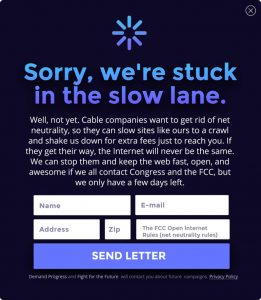

Free Press: New FCC Rules On Net Neutrality
The Federal Communications Commission recently released a plan to do away with landmark regulations ensuring equal access to the Internet. They pave the way for Internet service companies to charge the public higher rates to see certain content and to even deny access to some websites.
The proposal was made by the FCC chairman, Ajit Pai, an opponent to regulation in general. Pai is the former Associate General Counsel for Verizon Communications, Inc.
The proposal is expected to be approved in mid-December. In his first year Pai, who was appointed by Donald Trump, has already eliminated numerous regulations. The agency has stripped down rules governing TV broadcasters, newspapers and telecom companies designed to protect the public interest. In addition to the net neutrality rollback, the chairman announced a plan to eliminate a rule limiting any corporation from controlling broadcasts that can reach more than 39 percent of American homes.
In a broad brushstroke, the new proposal repeals rules put in place by the Obama administration that prohibit high-speed internet service providers, or I.S.P.s, from slowing down or even stopping the delivery of websites. The Obama rules prevent companies from charging customers extra fees for high-quality streaming and other services. These former rules were drafted to preserve the principle commonly known as “net neutrality” and to prevent practices that would created tiers of access to the Internet.
The plan to repeal existing rules that were passed in 2015 would reverse a hallmark decision by the agency to consider broadband a public utility, as essential to modern lives as phones and electricity. The earlier decision created the legal foundation for the current rules and underscored the importance of high-speed internet service.
Guest – Attorney Gaurav Laroia, Policy Counsel at Free Press. Before joining Free Press, he worked at the Government Accountability Project protecting the rights of national security whistleblowers.
—-

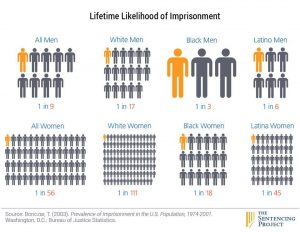
The Sentencing Project
The United States of America imprisons more of its citizens both in absolute numbers and as a percentage of the population than any other country in the world. Only China comes close. On any given day 2,300,000 Americans are in jail or prison, 70% of them are non-white.
Former Alabama senator Jefferson Beauregard Sessions wants these numbers to rise. He has instructed federal prosecutors to prosecute people for the most serious possible crime and to demand the longest possible sentence.
In the last 30 years the number of people in jail and in prison have skyrocketed by factor of five. Prosecutors are increasingly demanding life sentences without the possibility of parole. Judges have lost their discretion with the implementation of maximum minimum sentencing. The long-term impact of mass incarceration has been devastating, especially to black communities.
Attorney General Sessions has stated that there is “a dangerous permanent rise”
in violent crime, despite FBI data showing a sharp decline in the last 20 years. He has falsely charged that crime increases have been caused by immigrants and that prosecutorial policy under Obama caused crime to increase.
Guest – Marc Mauer, the Executive Director of the Sentencing Project and a central figure in the justice reform movement. The Sentencing Project is a Washington DC based research and advocacy group working to reduce the use of incarceration in the United States and to address racial disparities in the criminal justice system.
Follow Heidi Boghosian on Twitter – @HeidiBoghosian
CIA Sponsored Terror, Civil Liberties, Criminalizing Dissent, Human Rights, Political Prisoner, Truth to Power, War Resister
Podcast: Play in new window | Download
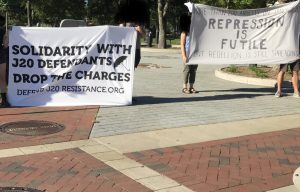
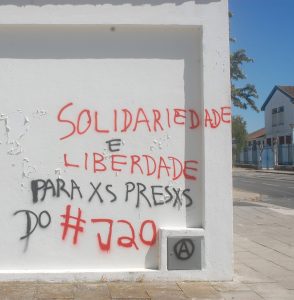
Defend J20: First Protestors
Last January, at Donald Trump’s Inauguration, over 230 people—some protesters, some not—were trapped and arrested by police. Federal prosecutors charged them with a crime that actually doesn’t exist in DC: “felony rioting.” Armed with secret warrants, prosecutors then probed deeply into the defendants’ personal lives.
Charges were dropped for some arrestees, including journalists and legal observers. Over 200, however, saw their charges increased to felony rioting, felony incitement to riot, conspiracy to riot, and property-damage crimes related to broken windows. Each defendant is facing over 60 years in prison.
Prosecutors obtained warrants focused on anti-Trump organizers. Warrants sought a list of visitors to a protest-related website and the Facebook friends and related communications of two organizers, the host of a coalition Facebook page, and those who had “liked” that page.
This prosecution follows a change in local law enforcement’s response to protest that we covered years ago on Law and Disorder. The mass arrests and harsh charges are precisely what new DC policies were designed to avoid. A 2002 mass-arrest and subsequent lawsuit by the Partnership for Civil Justice resulted in the District paying over $10 million in settlements and changing its crowd control policies.
Trials for the inauguration protesters begin mid-November and are expected to continue for a year.
Guest – Yael Bromberg, Yael is a supervising attorney and teaching fellow with the Institute for Public Representation at the Civil Rights Clinic of Georgetown University Law Center. defendj20resistance.org
—-

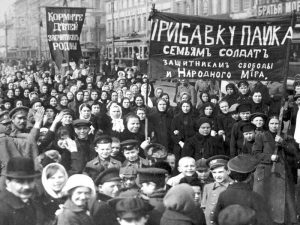
October Song: Bolshevik Triump, Communist Tragedy 1917-1924
This year marks the 100th anniversary of the Russian Revolution of October, 1917. The revolution changed the course of history and determined world politics internationally and in the United States of America for most of the 20th century, until finally, under the unrelenting onslaught of the west and principally the USA, the revolution was overthrown in 1991 when capitalism was restored to that country.
Before the revolution, Russian was a feudal monarchy, headed up by a czar in a country where most of the population were peasants working the land under near slave-like conditions.
World War I started in 1914 and Russia allied with France and Great Britain against Germany and other countries. It was a war for foreign markets, resources, and colonies. By 1917, 30 million people have been killed. In one week alone 250,000 soldiers died.
The Russian revolution was nearly bloodless and nonviolent. The first thing the revolutionary government did was to end their country’s participation in the war, which ultimately ended the war.
The second thing they did was to redistribute the land to the peasants who worked it. Then they nationalized industry under control of the workers in the plants. Thus, the 1% of the Russian elite were dispossessed and the 99% took control of the institutions of their country and ran them through councils of workers and peasants and soldiers, which had been organized prior to the revolution and which were led by socialists.
The Russian revolution inspired the hopes of humankind throughout the industrial and under-developed colonial world. The peasants were given land, women gained equal rights and the right to vote and to get an abortion. Homosexualty was made legal. Minority rights were guaranteed. Education, the arts, and culture received government support. For a period Russia was the most democratic country on the planet.
We speak today with history professor Paul LeBlanc about the Russian revolution and the lessons it teaches for social change activists in America today.
Guest – Professor Paul LeBlanc is the author of the just published book October Song: Bolshevik Triumph, Communist Tragedy, 1917-1924. He is the author of a number of widely read studies including Lenin and the Revolutionary Party and Marx, Lenin, and the Revolutionary Experience. He teaches at Laroche college in Pittsburgh.
Follow Heidi Boghosian on Twitter – @HeidiBoghosian
Civil Liberties, Criminalizing Dissent, Human Rights, NSA Spying, Political Prisoner, Prison Industry, RFID, Supreme Court, Surveillance, Truth to Power
Podcast: Play in new window | Download
Law and Disorder Editorials:
- FDA Approves Digital Pill by Heidi Boghosian
—-
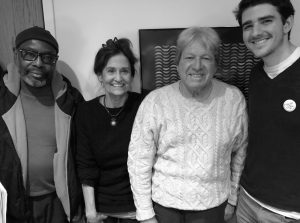
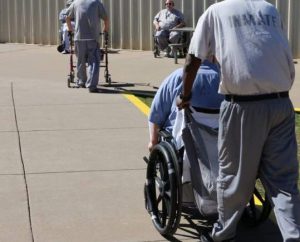
Release Aging People in Prison Campaign
The number of persons 50 years and older in New York State has risen more than 98% since 2000; it now exceeds 10,000—nearly 20% of the total incarcerated population. This reflects a national crisis in the prison system and the extension of a culture of revenge and punishment into all areas of our society.
The organization Release Aging People in Prison, or RAPP, works to end mass incarceration and promote racial justice by getting elderly and infirm people out of prison.
Led by Mujahid Farid, a 2013 Soros Justice Fellow who was incarcerated for 33 years in New York before his release in 2011, RAPP focuses on aging people in prison, many of whom are long-termers convicted of serious crimes. Many of these human beings have transformed their lives and developed skills and abilities they lacked before incarceration. They could be released from prison with little or no threat to public safety. Yet many are denied release, often for political reasons, and they needlessly remain imprisoned into old age. These elders could return to their communities if current mechanisms such as parole and compassionate release were correctly utilized. We also support legislation in New York to correct the parole system and increase the number of releases.
Guest – Mujahid Farid co-founded the Prisoners AIDS Counseling and Education program and helped design prison-based sociology and theology courses that allowed others to earn college-credited in prison. He also earned four college degrees and other certifications while incarcerated, including his paralegal certificate, NYS Department of Labor Certificate in Human Development Counseling, and NYC Department of Health Certificate in HIV/AIDS Counseling.
—-
Guest – David George, Associate Director of RAPP. In the last few years Dave has organized with and on behalf of currently and formerly incarcerated people, including at the Osborne Association and Correctional Association of New York.
—-
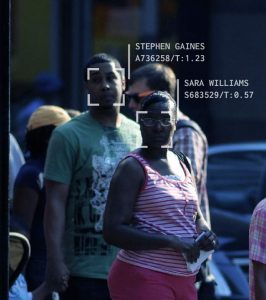

Perpetual Line Up: Unregulated Police Face Recognition In America
The presence of surveillance cameras across the United States has enabled targeted facial recognition surveillance at essentially any place and any time. Each day law enforcement puts in place more and more cameras, including CCTV cameras, police body cameras, and cameras on drones and other aircraft. The FBI’s Next Generation Biometric Identification Database and its facial recognition unit, FACE Services, can search for and identify nearly 64 million Americans, either from its own databases or through access to state DMV databases of driving license photos.
It’s likely that government agencies will soon be able to pinpoint your location and even with whom you’ve been, just by typing your name into a computer.
The release of Apple’s IPhone X has drawn scrutiny to this technology. Despite civil liberties and privacy concerns, there are few limits on facial recognition technology. In March 2017 Congress held a hearing to discuss the risks of facial recognition surveillance. There is concern that facial recognition can be used to get around existing legal protections against location tracking, opening the door to unprecedented government monitoring an logging of personal associations, including protected First Amendment-related activities. Knowledge of individual’s political, religious and associational activities could lead the way to bias, persecution and abuse.
As with many technological advances, there are benefits, too. Facial recognition can assist in locating missing persons or for other public safety purposes.
Guest – Clare Garvie, Clare is a Law Fellow at the Georgetown Law Center on Privacy and Technology. Her research with the Center is on face recognition use by law enforcement and the disparate impact of payday lending on vulnerable communities. She worked on the Center’s 2016 report on facial recognition technology.
CIA Sponsored Terror, Civil Liberties, Human Rights, Truth to Power, War Resister
Podcast: Play in new window | Download
Law and Disorder Editorials:
—-
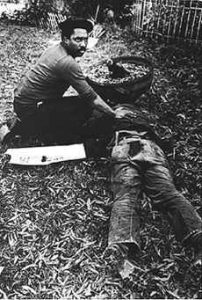
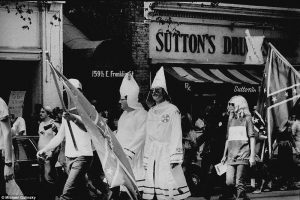
Lessons From The Greensboro Massacre
Thirty eight years ago, on November 3, 1979, 35 heavily armed members of the Ku Klux Klan and the American Nazi party drove nine vehicles through the city of Greensboro, North Carolina, and opened fire on a multi-racial group of demonstrators who were gathering at a black housing project in preparation for an anti-Klan march.
Using semi automatic rifles, shotguns and pistols the Nazis and Kukluxers fired 1000 projectiles in 88 seconds killing five march leaders and wounding seven other demonstrators.
Most of the victims were associated with the Communist Workers Party, a multi racial group which had been organizing in the south for workers rights in the cotton mills and against the Ku Klux Klan.
The Greensboro police, the Bureau of Alcohol, Tobacco, and Firearms, and the Federal Bureau of Investigation were all aware of the planned attack. Four TV stations captured the massacre on video. A reluctant local district Attorney obtained six indictments under pressure from the Greensboro Justice Fund which had been organized by the windows of the victims, and the public outcry. A six-month trial resulted in the acquittal of all six defendants.
Then a reluctant Reagan administration Department of Justice tried nine of the Klansmen and Nazis on civil rights conspiracy charges. After a three-month trial all nine were acquitted.
A year after the massacre a civil rights suit was brought on behalf of the 16 victims. It expose d the depth and contours of official involvement.
After an extraordinary dramatic 10 weeks civil trial a southern jury finally convicted a good number of the actors in the massacre. The verdict was national news.
Guest – Attorney G.Flint Taylor, a graduate of Brown University and Northwestern Law School, is a founding partner of the People’s Law Office in Chicago, an office which has been dedicated to litigating civil rights, police violence, government misconduct, and death penalty cases for more than 40 years.
—————
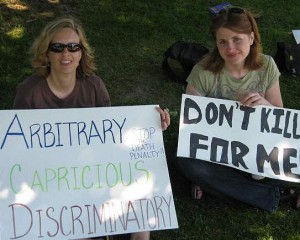
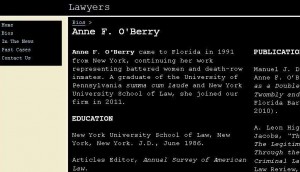
Lawyers You’ll Like: Anne O’Berry
As part of our Lawyers You’ll Like series we’re joined by attorney Anne O’Berry, she’s the Vice President of the Southern Region of the National Lawyers Guild and the author of The Law Only As An Enemy: The Legitimization of Racial Powerlessness Through the Colonial and Antebellum Criminal Laws of Virginia. While in law school, she served as Director of the Women in Prison Project at Rikers Island, where she taught incarcerated women how to prevent termination of their parental rights.
Anne clerked for federal judges in New York, New Jersey and Pennsylvania, including Judge A. Leon Higginbotham, Jr. of the U.S. Court of Appeals in Philadelphia, with whom she co-authored an article on the law as a tool of oppression against slaves and free blacks in pre-Civil War Virginia and taught civil rights and South African apartheid law at the University of Pennsylvania. She later taught Race and the Law at St. Thomas University Law School in Miami, Florida.
In the last 12 years, Anne has served as counsel at a Florida law firm that specializes in class action litigation, particularly in the areas of securities, consumer and economic fraud, as well as some environmental and privacy rights litigation.
Attorney Anne O’Berry:
- We did a lot of historical research in terms of racism and the law back in pre-civil war Virginia.
- We focused on Virginia because it was a paradigm for slavery basically in the slave laws that were in place.
- We wrote an article for publication, it was published in the University of North Carolina law review. The Law Only As An Enemy:’ The Legitimization of Racial Powerlessness Through the Colonial and Antebellum Criminal Laws of Virginia.
- Depending on your status, if you were a free white person or a slave, you were treated differently by the law.
- As an overall theme, depending on the race of the victim was that would effect what your sentence would be.
- For example, if a black woman was raped, that was not considered a crime. If you were a black person and you stole something, you would be put to death.
- It was ironic for the slave owner because if their slave was put to death, they would have to be compensated by the state.
- If the victim was black, the crime was treated less seriously than if the victim was white.
- I started out working at a firm in New York, a large prominent, Wall Street type.
- Among some people I was known as the pro-bono queen.
- I was there for 2 and a half years and the first pro-bono case was a death penalty case.
- The court ruled back then (1990s) that it was ok to execute the mentally retarded.
- I was so moved by that experience that I gave up my cushy job in New York and go do death penalty work full time.
- I ended up at the Federal Resource Center doing death penalty work in Tallahassee Florida.
- I worked for the Battered Women’s Clemency Project in Florida.
- More recently the Supreme Court did rule that it is unconstitutional to execute people who were juveniles at the time of the offense and unconstitutional to execute people who are mentally retarded.
- I believe in my lifetime we will see the end of the death penalty in this country.
- It’s just an amazing system that we have where the courts will say – yes you’ve got compelling evidence of innocence but we’re not going to hear your case.
- I would say what got me through was the victories.
- Presently, I’m working with an attorney Jim Green, who’s a prominent civil rights attorney in West Palm Beach, kind of a legend down here.
- I also some volunteer work with El Sol. It’s a day laborer center in Jupiter, Florida.
Guest – Anne O’Berry, National Lawyers Guild’s Regional Vice President for the Southern Region and a member of the Guild’s South Florida chapter. She obtained her undergraduate degree from the University of Pennsylvania in 1983 and her law degree from New York University Law School in 1986. While in law school, she served as Director of the Women in Prison Project at Rikers Island, where she taught incarcerated women how to prevent termination of their parental rights. She was a member of the law school’s civil rights clinic and an editor on one of the law school’s journals, and authored a law review article on prisoners’ rights. During and after law school, she clerked for federal judges in New York, New Jersey and Pennsylvania, including Judge A. Leon Higginbotham, Jr. of the U.S. Court of Appeals in Philadelphia, with whom she co-authored an article on the law as a tool of oppression against slaves and free blacks in pre-Civil War Virginia and taught civil rights and South African apartheid law at the University of Pennsylvania. She later taught Race and the Law at St. Thomas University Law School in Miami, Florida.
Academic Freedom, CIA Sponsored Terror, Civil Liberties, Climate Change, Crony Capitalism, Cuba, Habeas Corpus, Human Rights, NSA Spying, Truth to Power, War Resister
Podcast: Play in new window | Download
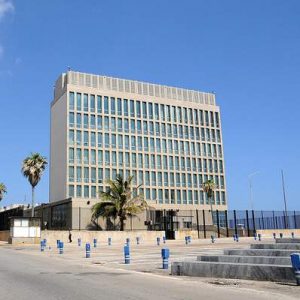

Cuban US Embassy Sonic Weapons Scare
The Trump administration is considering closing the recently reopened US Embassy in Havana after several unexplained incidents that allegedly hurt American diplomats in Cuba. Some lawmakers are calling for the ouster of all Cuban diplomats from the US in addition to the 15 they’ve kicked out of the country. Its a move that would have significant diplomatic implications.
US Secretary of State Rex Tillerson made these suggestions recently. His comments were the strongest indication yet that the US might mount a major diplomatic response, potentially jeopardizing the historic restart of relations between the Cuba and US governments. The two reopened embassies in Washington and Havana in 2015 after roughly a half-century of estrangement.
Of the 21 medically confirmed US victims, some have permanent hearing loss or concussions while others have suffered nausea, headaches and ear-ringing. Some are having problems with concentration or common word recall.
Some victims felt vibrations or heard loud sounds mysteriously audible in only parts of rooms, leading investigators to consider the possibility of a sonic attack. Others heard nothing but later developed symptoms.
The US State Department has emphasized that the US still does not know what has occurred. Cuba has denied any involvement and has said that it wants to help the US resolve the matter.
Investigators have explored the possibility of an electromagnetic weapon, or an advanced spying operation gone awry. The US has not ruled out that a third country or even a rogue faction of Cuba’s national security services may be involved.
Guest – Sandra Levinson, President and Executive Director of the Center for Cuban Studies. She was one of the Center’s founders in 1972. In 1991 Levinson spearheaded a lawsuit against the U.S. Treasury Department which resulted in legalizing the importation of original Cuban art. She is currently directing works at the Cuban Art Space, which she founded in 1999, to properly house and archive the thousands of posters, photographs and artworks which the Center has collected in the past 42 years.
Contact the Center for Cuban Studies at 212.242.0559.
—-
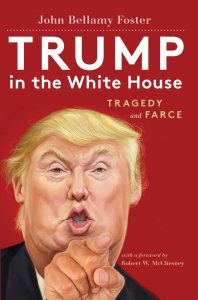

Trump in the White House: Tragedy and Farce
The great issues of our times are the return of fascism to the United States and Europe, climate change, and the stagnation of the world capitalist economy. These great issues are pressing and interconnected.
We used to think that the experience of World War II guaranteed that no politician would ever advocate the ideas of fascism.
But the election of Donald Trump a year ago has caused a serious reconsideration of fascism and it’s relationship to capitalism and to democracy.
The neoliberals paved the way for Trump. Now he and the forces aligned with him have put our democratic institutions under attack in order to protect the rule of the wealthy. The attacks include the right to vote, labor unions, public education, an independent news media, independent public universities, the privatization of much of traditional governmental functions and making it almost impossible to launch a new political party.
The election of Trump is a political development that for concrete sociological reasons allows us to see it for what it is, as a type of neo-fascism. Only by identifying the phenomena correctly can we effectively fight it.
Jack London wrote a century ago in his famous book The Iron Heel that “There is a shadow of something colossal and menacing that even now is beginning to fall across the land. Call it the shadow of an oligarchy, if you will; it is the nearest I dare approximate it. What is nature may be I refuse to imagine. But what I want to say was this: You are in a perilous position.”
Guest – John Bellamy Foster is editor of Monthly Review and professor of sociology at the University of Oregon. He has written widely on political economy and has established a reputation as a major environmental sociologist. He is the author of Marx’s Ecology: Materialism and Nature (2000), The Great Financial Crisis: Causes and Consequences (with Fred Magdoff, 2009), The Ecological Rift: Capitalism’s War on the Earth (with Brett Clark and Richard York, 2010), and The Theory of Monopoly Capitalism: An Elaboration of Marxian Political Economy (New Edition, 2014), among many others.
CIA Sponsored Terror, Civil Liberties, Criminalizing Dissent, Human Rights, Political Prisoner, Prison Industry, Supreme Court, Targeting Muslims, Torture, Truth to Power, War Resister
Podcast: Play in new window | Download
Updates:
- Co-host Attorney Heidi Boghosian Discusses Robert “Sugar Bear” Lark Case
- Government Targeting Black Resistance Groups
—-

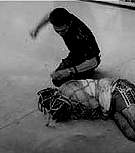
Victory In Al Shimari v CACI
President Trump told us during the campaign that he was in favor of torture because “it works.“ The Center for Constitutional Rights recently won a significant round in a case against a private military contractor, CACI who had tortured three of its clients at the infamous Abu Graib prison in Iraq in 2003 and 2004.
When he was president of the Center for Constitutional Rights, Michael Ratner maintained that if the torturers were not prosecuted, the practice of torture would be repeated. In fact none of the architects were held accountable in court. That is why the this recent procedural victory by CCR, in the case of Al Shimari is so important.
Guest – Attorney Katherine Gallagher is a Senior Staff Attorney at the Center for Constitutional Rights. She works on universal jurisdiction and international criminal law cases involving U.S. and foreign officials and torture and other war crimes, and cases involving private military corporations and torture at Abu Ghraib. Her major cases include Al Shimari v. CACI, the international U.S. torture accountability cases, and Survivors Network of those Abused by Priests (SNAP) v. Vatican, seeking accountability for the crimes against humanity of sexual violence by clergy and cover-up.
—-

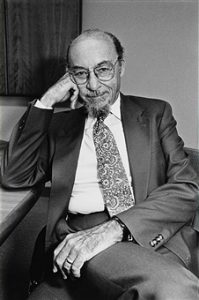
International Association of Lawyers Against Nuclear Arms: North Korea
Not since the Cuban missile crisis of 1962, 55 years ago, has the prospect of nuclear war seemed so frightening. President Donald Trump, who alone can commence a nuclear attack, has threatened North Korea with “fire and fury.“ North Korea has a population of 25 million people.
Gabriel Sherman writing recently in the magazine Vanity Fair said that the situation with Trump has gotten so out of control that Trump’s Chief of Staff, General John Kelly, and his Secretary of Defense, General Jim Mattis, have discussed ways to stop Trump should he order a nuclear attack.
Obviously, the solution to winding down the escalating confrontation needs to be one of diplomacy. But when Secretary of State, Rex Tillerson, the chief diplomat in America, attempted to do just that President Trump said publicly that “you are wasting your time.“
Guest – Peter Weiss, distinguished international lawyer and President Emeritus of the International Association of Lawyers Against Nuclear Arms and its US affiliate, the Lawyers Committee on Nuclear Policy. He helped draft their October 10th, 2017 statement North Korea: Solution or Disaster. Peter Weiss was a founder of the Center for Constitutional Rights and its former Vice President.
———————————-























